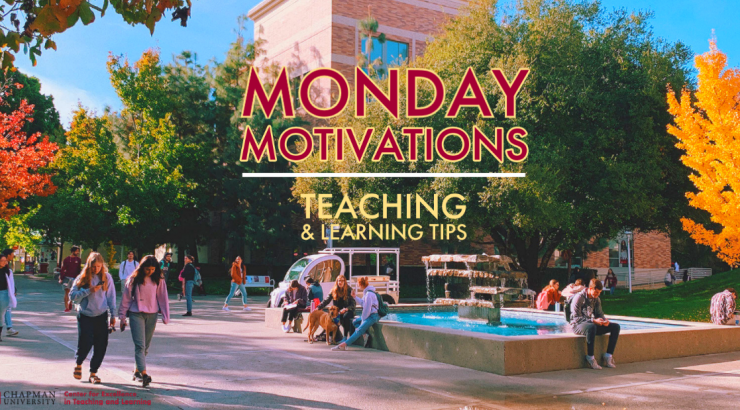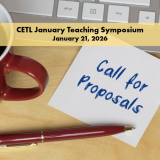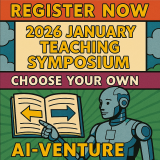
Tips for the Week of April 10, 2023
April 6, 2023
Let’s Get Loud: The Sound of Learning
We know that active learning is effective, but what does it sound like in the classroom? Germano and Nicholls (2020) challenge us to think about the “acoustics” of good pedagogy, or what a classroom with active, engaged students actually sounds like. Rather than a lengthy solo performed by the instructor, they suggest that learning is like a group improvisation performance, with each player (student) “perpetually occupied”. Researchers at San Francisco State University developed a tool they call decibel analysis for research in teaching (DART), that measures the sound of active learning and the “extent to which instructors use innovative teaching methods” in the classroom. We encourage you to use some active learning techniques in upcoming class sessions, and when you do, take a moment to listen to what that sounds like.
Are We Thinking Critically or Critical of Thinking?
Developing critical thinking (CT) skills has been a longstanding aim of our educational system. But can students develop the ability to think and/or read critically if only exposed to texts, ideas, and art forms that reflect mainstream/majority worldviews, perspectives, and belief systems? To be “critical” in academia, Reed (2023) suggests “students must view themselves as peers of the producers of the work rather than either being unworthy of the wisdom or posing as a hanging judge.” This is challenging for many students coming to us from K-12 systems that have become narrower in historic and literary content, as well as perspectives, scientific ideas, and even art allowed in classrooms today. University faculty must teach CT explicitly with complex material by intentionally 1) implementing High-Leverage Critical Thinking Teaching Practices and 2) selecting learning activities that nurture the development of higher-order thinking skills through deliberate practice in their discipline.
Keeping Integrity at the Core of Student Work
Conversations about cheating and academic integrity have historically echoed through the halls of institutions of higher education, but with the explosion of digital tools and technologies these conversations have taken on higher frequency and decibel levels. With the onslaught of plagiarism (and soon AI-generated detection) tools on the educational scene, how can we keep integrity at the core of our work as opposed to policing student work? Rather than a strategy used to ‘catch’ students in the act of academic dishonesty, tools like Turnitin are best used to teach critical literacy and research skills. Faculty can help students learn how to interpret the Turnitin Similarity Report when submitting a piece of writing for review. The same is true about using Turnitin’s newly released ChatGPT-generated content detection tool, Originality. Additional resources for writing and academic integrity in the age of AI and the new AI writing detection tool are available on the Turnitin website.
Interested in exploring any of these ideas further or discussing how you might implement them in your own teaching practices? Is there a tip you’ve tried that you’d like to share with colleagues? Contact CETL or schedule a consultation to continue the conversation.


